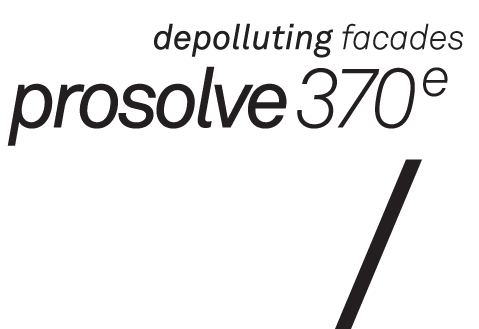How It Works
Depolluting technology
The modules are coated with a superfine titanium dioxide (TiO2), a pollution-fighting technology that is activated by ambient daylight. This is the nano photocatalytic version of conventional TiO2 commonly used as pigment and already known for its self-cleaning and germicidal qualities. It requires only small amounts of naturally occurring UV light and humidity to effectively reduce air pollutants into harmless amounts of carbon dioxide and water.
When positioned near pollution sources, the coated tiles break down and neutralize NOx (nitrogen oxides) and VOCs (volatile organic compounds) directly where they are generated.
The design of the tiles is generated to maximize the coating technology, achieving new levels of surface area and complexity, capturing omni-directional light where light is dense or scarce. The sculptural surfaces maintain an inherent synergy between design form and the molecular technology.
Top Illustration
Combustion engines emit harmful toxins such as NOx and VOCs while running, and also emit VOCs, ozone and particulate matter while resting.
Bottom Illustration
A photocatalytic screen positioned between cars and people would trap and filter many of the harmful by-products of combustion engines.
Tiling Geometry
Overcoming Complexity with Modularity
Derived from a five-fold symmetric pattern, the underlying substrate for the tiling is a mathematical grid that appears irregular, yet is made of few constituent parts.
The new, non-orthogonal grid creates a seemingly non-repetitive, tiled pattern, resulting in visual randomness, a desirable aesthetic that is typically achieved through bespoke design and expense.
The modularity of the system enables complex architectural shapes to be accessible, benefiting from economies of scale.
While the pattern resembles organic growth, the system is still composed with only two repeating modules.
Facade Assembly
Giving a Building Identity
prosolve370e is proposed as a decorative facade module, with specifically-developed joints that are able to translate the pattern to standard, off-the-shelf, cladding equipment.
The tiles are made of a lightweight thermoformed fire-rated ABS plastic shell, joined with standard steel fixings.
As a decorative module, the tiles have potential to regenerate aged facades, ornament a modernist facade, or provide an appealing face to buildings which lack identity or community significance.
Proposals for installations have ranged from carparks to mixed-use/housing to hospital facades.




